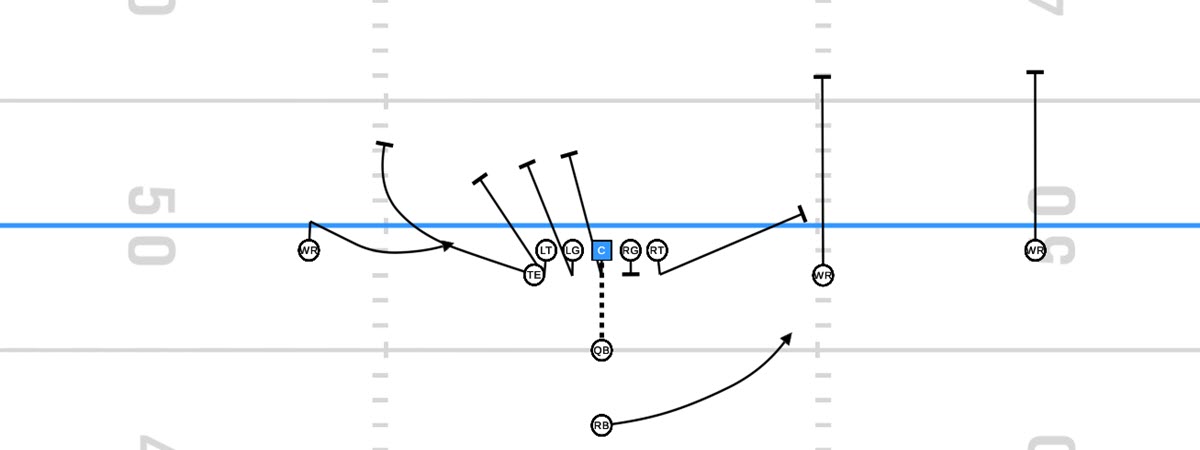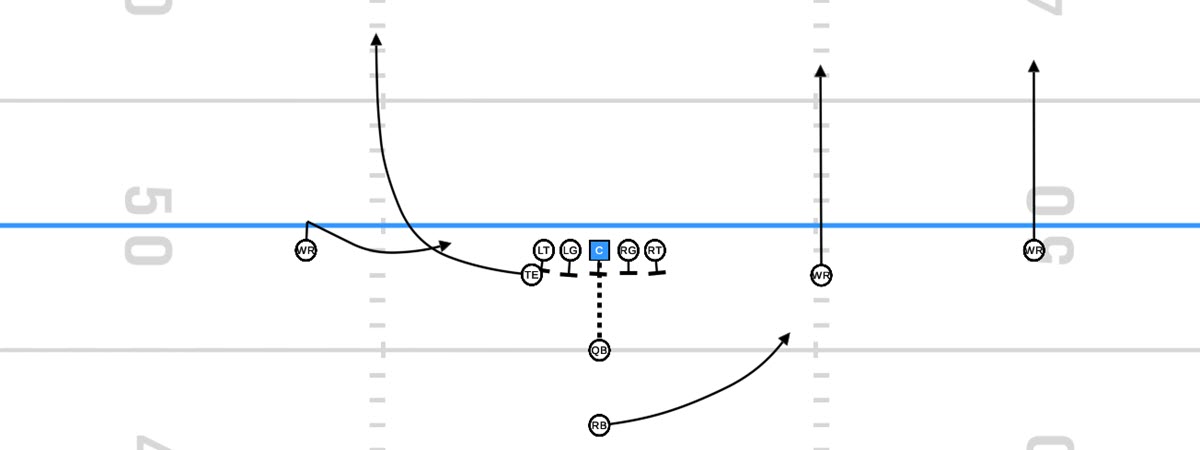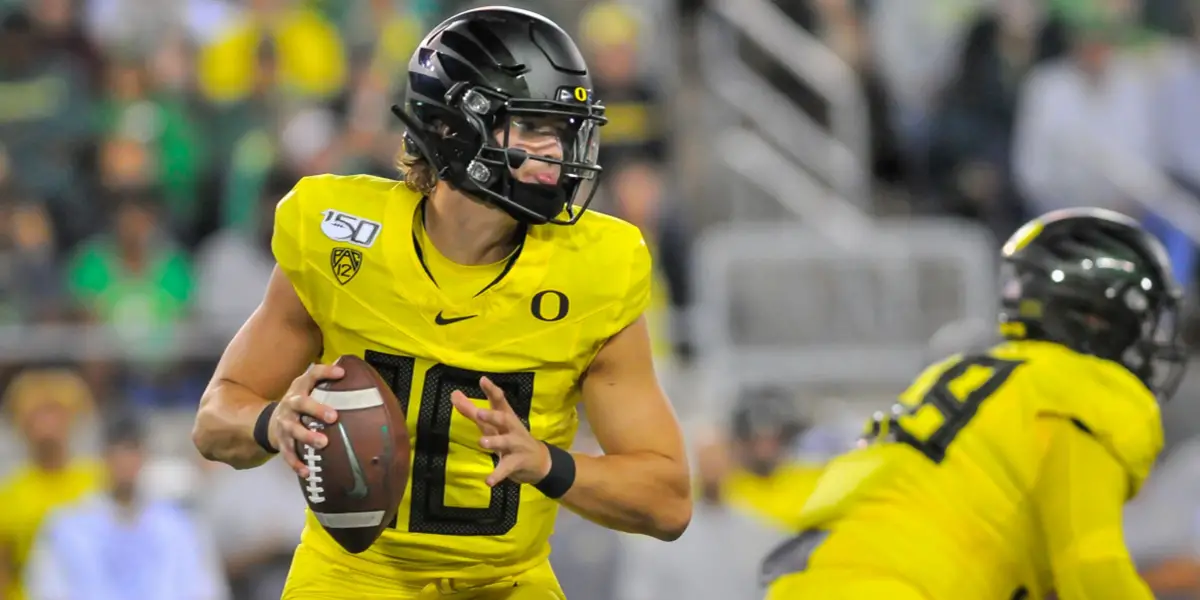It should be apparent by this point in the season that Oregon offensive coordinator Marcus Arroyo is a creative dude, and he can certainly string together effective constraint plays. Those are obviously two very important traits for a play-caller to have, and in this article I want to dive into a set of two plays that demonstrate both of those traits in Arroyo.

The Double Screen
The play that we’ll really be focused on here is the double screen. It’s a simple play that is exactly what it sounds like it is: a screen pass with two screens. If I had to sum up the entirety of what the play itself actually is, I would say that it is an option screen. In fact, it’s read very similarly to almost every other option play in football.
In the two diagrams above, you’ll notice that there are screens being run to both sides of the formation. To the right is a swing screen to the running back, and to the left is a tunnel screen to the wide receiver. On the right side of the play, the two WRs are going to stalk block as the right tackle pass sets momentarily and then leaks out to block for the swing.
On the left side of the play, the tight end is arch blocking as the entire left side of the offensive line and the center again momentarily pass set, and then leak out to block for the tunnel screen. The WR takes his one step upfield and then works back behind his blockers.
What you don’t see in the diagram is that, after the snap, the quarterback is reading the defensive end to the swing side of the play. If that DE stays home or rushes upfield, the QB can easily dump the ball off to the back and be done. But, if the DE widens with the right tackle, the QB then turns left and delivers the ball to the tunnel.
In the video above, Justin Herbert is reading the outside linebacker at the top of the screen (this would be a DE in an even front). The backer decides to widen with the RT, keying Herbert to throw to Josh Delgado running the tunnel at the bottom of the screen. Delgado gets behind his blockers and picks up an eight-yard first down.

Fake Double Screen Wheel
Now there is a constraint that Arroyo has built off of the double screen, and he used it to great affect against the Stanford Cardinal. Because it is so easy to explain after the double screen, I’m going to add it here as a bonus.
In the two diagrams above, you’ll notice that just about everything about this play looks exactly like the double screen. The only real differences are that the entire OL pass sets and stays that way instead of leaking, and the TE is running a wheel route. The wheel makes it look as though the same arch block in the double screen is coming.
In the video above, Herbert goes through all the same motions as he does with the double screen. He turns right to “read” the end, goes left to “throw” the tunnel and then finally tosses it downfield to Jacob Breeland.
The entire left side of the defense completely falls for it. All three defenders get caught up with the motions of the WR selling the tunnel, and Breeland scoots right past them. I’m not sure Herbert could have handed the ball to his TE any easier than that.
This is just an awesome set of plays. A screen pass that is essentially an option play already stresses a defense horizontally across the field. Then, they add the trickery of faking the exact same play, and stretch the defense vertically downfield, or, in this case, the defense still plays horizontally and surrenders a quick six points.
The Arroyo system sure is proving to be a lot more dynamic than some may have thought it was.
Coach Eric Boles
Newark, Ohio Top Photo by Kevin Cline
Eric resides in Central Ohio, just outside the capital city of Columbus. He is a former offensive assistant and return game coordinator for the Ohio State – Newark/Central Ohio Technical College Titans football program.
He is an OSU-N graduate, having completed a Bachelor of Arts program in psychology.

